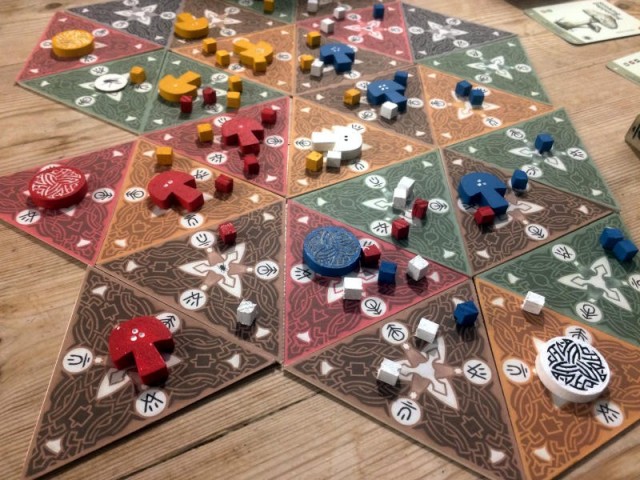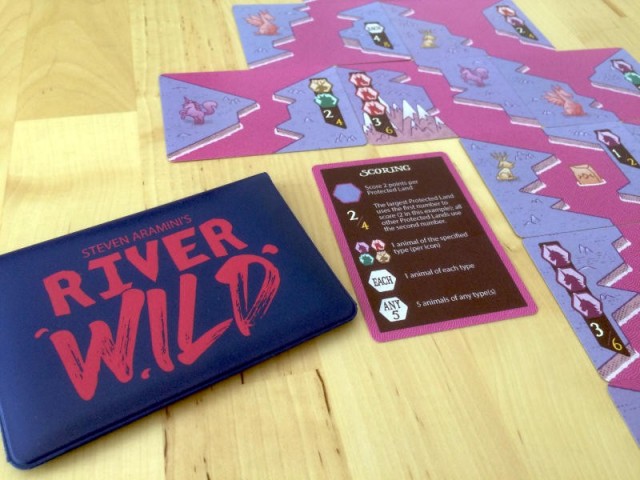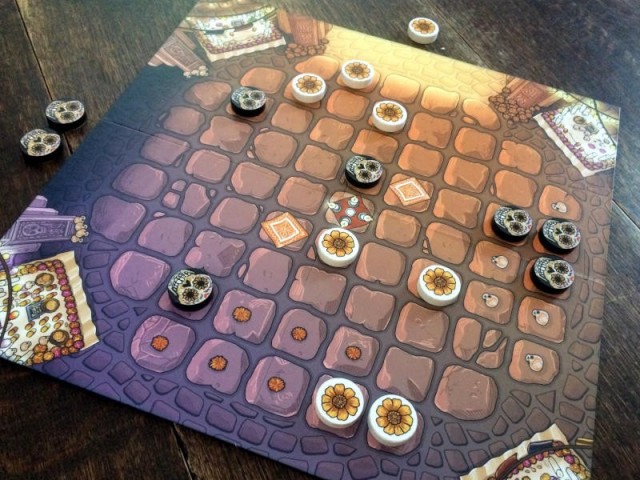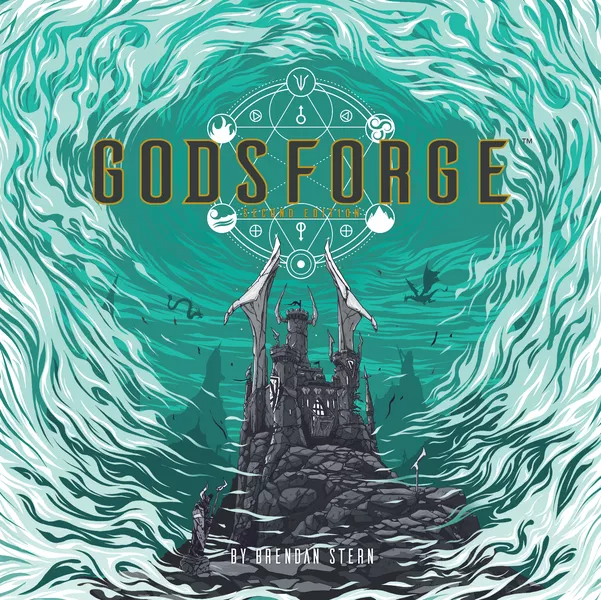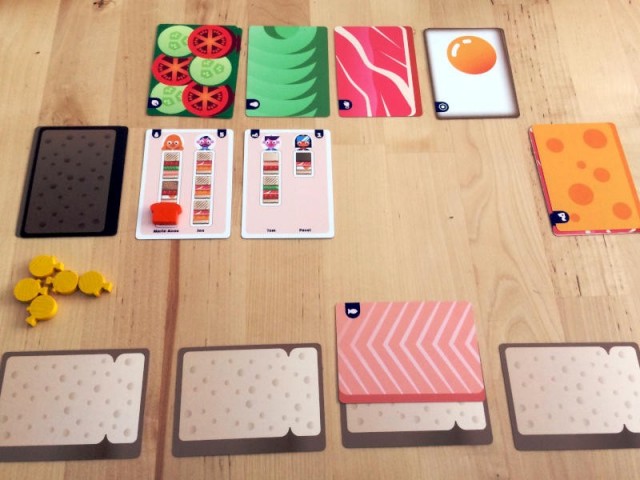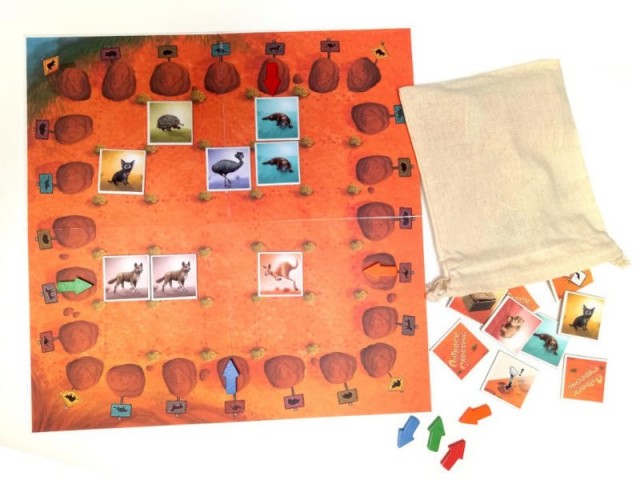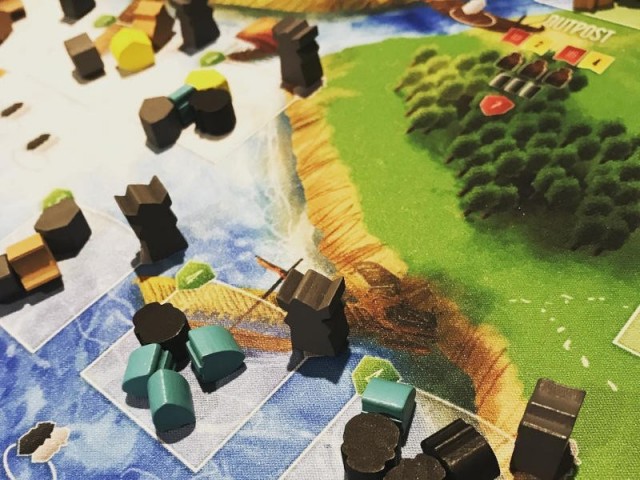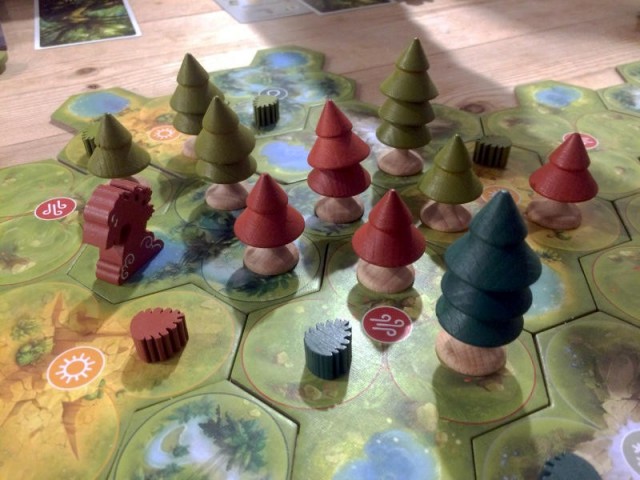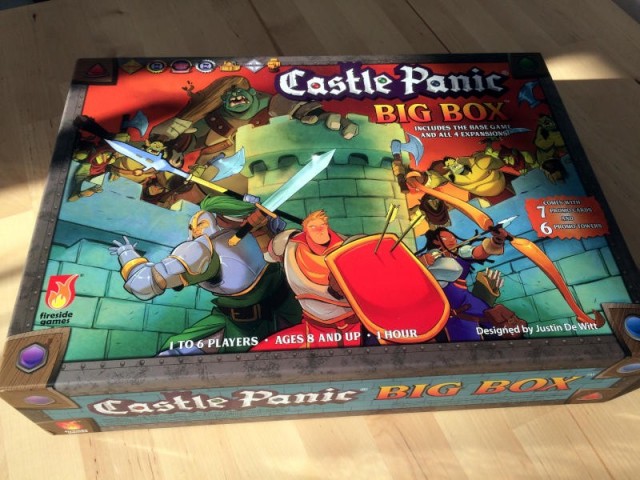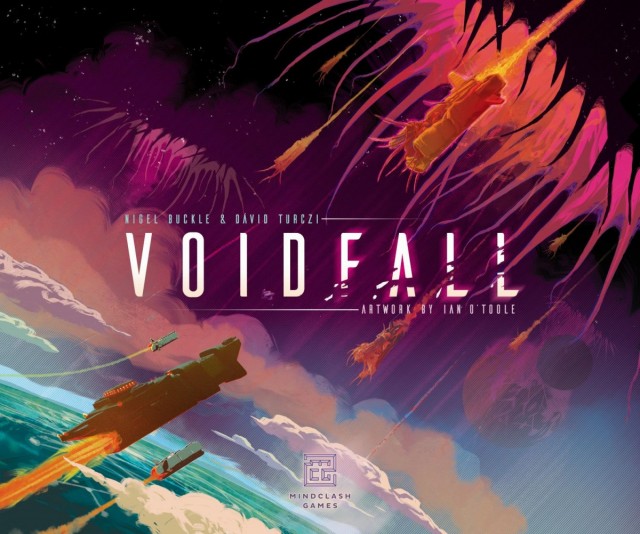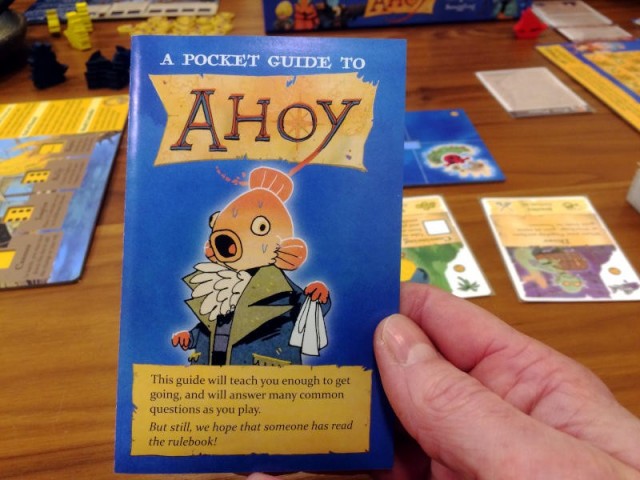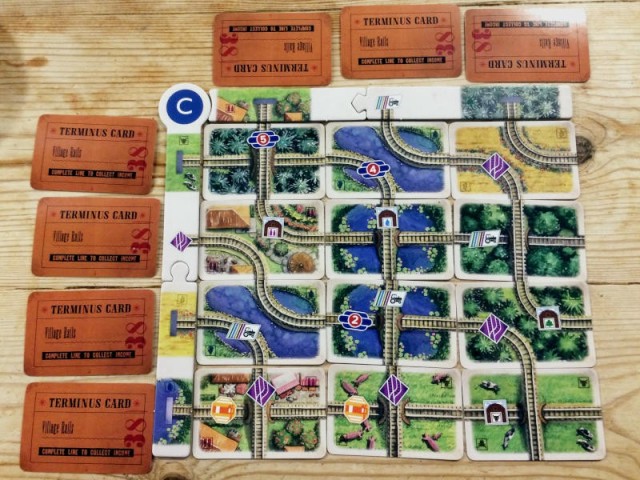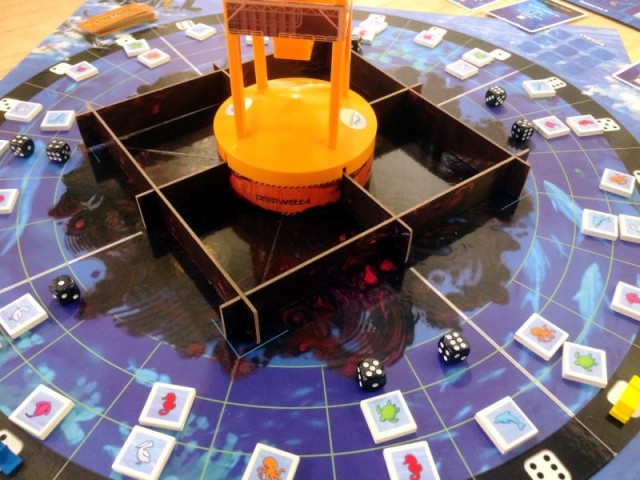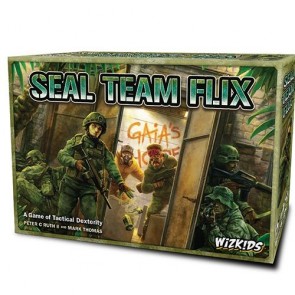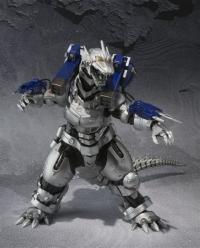Hardcore FPS Tactical Combat Meets Finger Flickin' Fun.
We've got to get a disclaimer out of the way up front on this one, folks. I've known the designers of Seal Team Flix, Pete C. Ruth II and Mark Thomas, for several years and they have been Distinguished Members of this very website for as long as I've known them. So there is perhaps a tinge of impropriety in my reviewing this game, but there here we are. And it would be dishonest for me as a reviewer to not come forward on this title because it's a good one that you should know about, regardless of the fact that Mr. Ruth once bought me a cup of coffee. And another time doxxed me.
Seal Team Flix is published by Wizkids under the auspices of the legendary gaming icon Zev Shlasinger, and for those who wondered if Zev would be able to put out the kinds of more leftfield, quirky titles that his Z-Man imprint was known for at the Heroclix company- here you go, this is it. Seal Team Flix is a sort of tactical, squad-based combat game with a modern Rainbow Six-like special forces setting. It's loaded up with enough military hardware, terms like "intel" and "tangoes", and counterterrorist goings-on to please any armchair gunman that enjoyed the Modern Warfare video games, and in fact I sort of feel like this game is coming along a little late as the military FPS genre's primacy has long waned and the kids are now shooting up more colorful characters than rogue Russians and various brown-skinned bad guys.
But it is also a case of better late than never, because this particular concept is actually quite underused in gaming. There aren't many games about modern special forces operations. However, before I dig into what this game is going to put on your table, I want to take a moment to address this very issue. I've gotten older- by some ten years- since I was interested in playing Call of Duty games. And to be honest, at 42, now I kind of understand why there's not a lot of games about this subject. There is no history to pad or shield the subject- it's about soldiers busting in and killing people with an ideological difference or objectives counter to US interests. I've found myself sort of at arm's length with Seal Team Flix because it is about US military operatives using real weapons to battle a radical Environmentalist group. Granted, this group is presented as dangerous and definitely "bad" in the game's fiction, but as a radical environmentalist myself, I kind of see the problems of gameplay that presents modern conflict between this kind of faction and special forces with a degree of realism. The funny names for the bad guy characters and the lighter tone of the game are often at odds with the subject matter, and it comes across as oddly serious for a finger-flicking dexterity game.
Yep, you read that right. Per the game's title, this is finger-flicking game close in spirit to Catacombs or Flick 'Em Up. But it is also quite a bit more involved than those games, and there is a level of sophistication in the design that is surprising. It's fairly complicated, a little fiddly, but the result is a hugely variable scenario-based game that offers players not only traditional tactical gameplay, but also skill-based attacks and resolutions requiring disk-flicking for everything from firing an MP5 to deactivating a door lock to hitting a headshot with a sniper.
Each player gets a Navy SEAL character and standee. Characters can actually level up over the course of a campaign and unlock access to special skills and more advanced weapons. There are a ton of scenarios, all of which are linked in the campaign game but also playable as one-offs. All play out on one or more of the game's large boards, which are marked off by tiny little walls creating rooms, doorways, and boundaries. There are a wide variety of missions and objectives ranging from escort missions, disarming bombs, collecting intel, and in one really cool one assaulting a plane on a tarmac.
Each SEAL gets two actions from a pretty extensive menu but the key actions are moving, which is square by square, and shooting. The map is marked off in a grid, and in one absolutely brilliant stroke the corners and other spots where a figure has cover are marked with arrows. This means you can be in cover, but fire from a "linked" arrow. It's cool, simple, and it completely automates cover determination.
And you'll do plenty of shooting in the game, as it is very FPS-influenced. Each weapon "fires" a small, medium or large disc. Some shoot more than one or more than one type depending on the fire mode they use. Shotguns can shoot through doors. All create sound, which can be reduced with suppressors if they are equipped. When you fire, you simply flick a disc from an eligible space close to your SEAL and try to hit a bad guy standee. Naturally, this means that dramatic shots can travel through doors, ricochet off walls, and hit some poor dude ducking behind a cover block. There are also optics, grenades, flashbangs, and other tools with various effects.
Now, the opposition operates in a completely different way. There is no "overlord", and a fairly complex AI system runs all of their spawning and actions based on patrol paths, availability of reinforcements, if the figure is in cover or not, if they can see a SEAL or not, and how much sound has been generated in nearby areas. This is the most complex part of the game, but it is mostly successful in simulating enemies converging on suspected intruders and seeking to not get shot in the face. With elements in play such as sound, it also encourages stealth, planning and smartly coordinated strikes so that the SEALS can avoid getting overwhelmed or piled on once things get hot.
I am particularly in love with the way the game handles how the terrorists attack the SEALS. It's a special die that they roll any time they are in LOS of one of our good guys. So if you successfully deactivate an e-lock by flicking all the discs off the keypad board within three shots, and there's a Tango on the other side, they react by rolling this die. It's smart, simple, and effective. But most significantly, it allows for players to take risks- running from cover to cover, breaching a room, or trying to get a hostage out of harm's way becomes more dramatic when you have to roll that yellow die.
It's all really smart stuff, and I think it is near-genius that the game splits its design between the tactical gameplay and the dexterity elements. Indeed, you could almost play this same game without the finger-flicking and traditional dice or card resolutions and it'd probably still be a pretty good Dudes on a Grid game with a military concept. But moving all of the resolutions to physical skill tests makes it all more viscerally fun and exciting. Believe me, hitting the tiny red dot on the sniper shot board is just as if not more exciting than rolling a natural 20.
I do kind of wonder if its juxtapositions are going to relegate it to more of a cult item. I'm not sure the mainstream market wants a game like this- finger-flicking isn't something you usually find in more detailed combat games. And Colt assault rifles are not something you usually find in more accessible dexterity games. Likewise, the fairly dense and detailed rules can seem incongruous with the "miracle" round-the-corner shots and laughs when someone bungles a bomb disarm attempt. You either roll with the mash-up or check out. That may keep some folks away from a surprising and sometimes great game.
I'm also iffy on the production. I've been playing a preproduction copy and I'm concerned about the durability of it. The walls fit into the boards, and as stated they are not supposed to be disassembled. The boards are put into the box with the walls, but I have yet to open the box (which seems about to burst with all the boards in it) and not find little walls all over the place. A little glue might be in order, but there are concerns about fraying and splitting. You almost want there to be a deluxe wooden set or something, but the cost would be astronomical given the number of boards and walls it would need.
I like this game a lot despite some personal misgivings about the subject and a few minor logistical complaints. It's singular, smartly written, and it has that scrappy spirit of imperfect innovation that is often in the games that I take notice of and care about the most. This is one of those "oh yeah, THAT game" titles that makes a mark. But that mark is in two very distinct, very different genres that this game mostly succeeds in bringing together.
 Games
Games How to resolve AdBlock issue?
How to resolve AdBlock issue? 